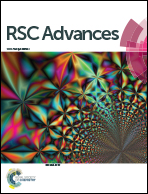Non-thermal plasma-treated gold catalyst for CO oxidation
Abstract
The CoOx-doped silica and its supported gold nanoparticles were synthesized by conventional thermal treatment or plasma treatment. The activity for CO oxidation displayed 100% CO conversion at only 338 K over the O2 plasma-treated Au/CoOx/SiO2-PO catalyst. Analysis of the results suggested that, different from the traditional calcined gold catalyst, the metal particles in the plasma-treated samples tended to be smaller and more homogeneous and highly dispersed on the surface of the support. The microstructure with a large surface contact and mesoporosity was more appropriate for the reactions. In addition, the O2 atmosphere plasma-treated samples generated a large amount of oxygen-supply centers, which in turn facilitated the low-temperature CO oxidation reaction. The plasma technique under an oxygen atmosphere is proved as an efficient treatment technique for gold catalysts.


 Please wait while we load your content...
Please wait while we load your content...